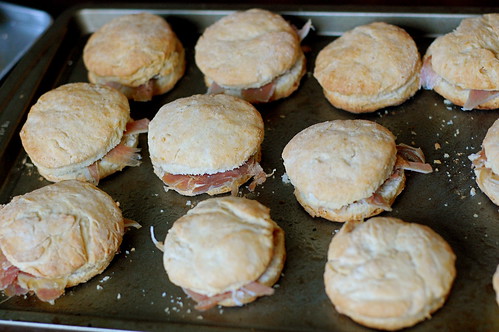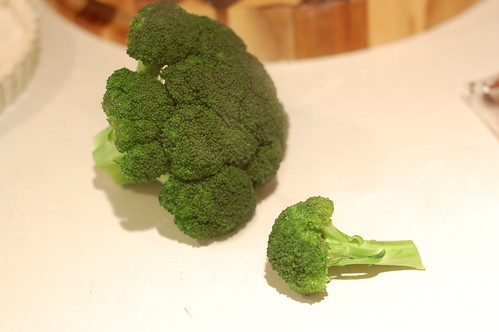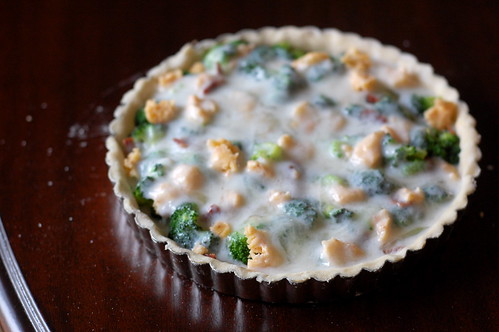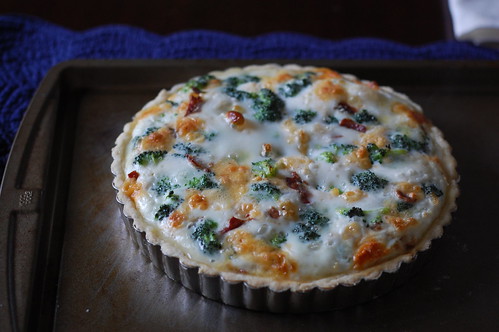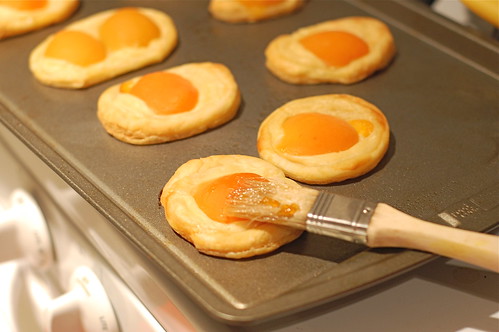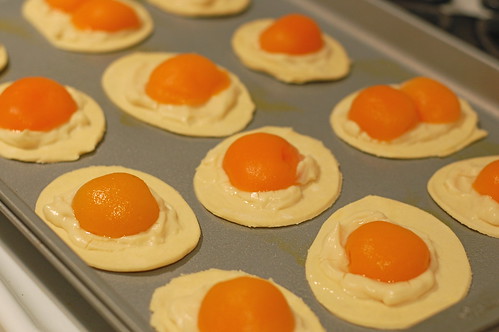 There are some dishes that just never seem to reach across cultural divides. If you didn't grow up with it, cold squid salad for breakfast, like they serve in Japan, is something that's pretty hard to get used to. I'm an adventurous eater, I'll try anything once, but there are some things I think I'll never quite catch on to. I lived in Lebanon and Syria for years, I ate bowls of fetteh served with cows hooves on top, tried flatbreads cooked on dusty roadside grills, and discovered grains I'd never heard of. But one thing, one thing everyone seemed to love, I could never get used to.
There are some dishes that just never seem to reach across cultural divides. If you didn't grow up with it, cold squid salad for breakfast, like they serve in Japan, is something that's pretty hard to get used to. I'm an adventurous eater, I'll try anything once, but there are some things I think I'll never quite catch on to. I lived in Lebanon and Syria for years, I ate bowls of fetteh served with cows hooves on top, tried flatbreads cooked on dusty roadside grills, and discovered grains I'd never heard of. But one thing, one thing everyone seemed to love, I could never get used to. Kunafe has as many different variations and definitions as there are cooks in Jordan. Basically, a crust of either buttery semolina, bread crumbs, or shredded phyllo is spread in the bottom of the pan, then some kind of cheese is layered on top, and then topped with more of the crust mixture. This is baked and then covered in sugary syrup. Traditional Palestinian kunafe is made a with a crumbly semolina crust, often dyed a fake orange, while in Syria you're more likely to see the kind made with shredded phyllo curls billowing like big hair. Usually the cheese is something chewy like halloumi or akkawi, and sometimes it's sweeter and softer like ricotta or clotted cream ('ashta).
Kunafe has as many different variations and definitions as there are cooks in Jordan. Basically, a crust of either buttery semolina, bread crumbs, or shredded phyllo is spread in the bottom of the pan, then some kind of cheese is layered on top, and then topped with more of the crust mixture. This is baked and then covered in sugary syrup. Traditional Palestinian kunafe is made a with a crumbly semolina crust, often dyed a fake orange, while in Syria you're more likely to see the kind made with shredded phyllo curls billowing like big hair. Usually the cheese is something chewy like halloumi or akkawi, and sometimes it's sweeter and softer like ricotta or clotted cream ('ashta).  My main problem with kunafe is that it sits in your stomach like a ten pound dumbbell, and my other problem is that I really don't like stringy melted cheese covered in syrup. Something about it is just kind of wrong to me, a clash of savory and sweet I can't stomach. In Lebanon, they serve kunafe for breakfast by plopping the whole sugary cheesy slice in the pocket of a pita bread. My friends in college swore by it as a hangover remedy, but I'm pretty sure it would make me queasy even on a sober stomach.
My main problem with kunafe is that it sits in your stomach like a ten pound dumbbell, and my other problem is that I really don't like stringy melted cheese covered in syrup. Something about it is just kind of wrong to me, a clash of savory and sweet I can't stomach. In Lebanon, they serve kunafe for breakfast by plopping the whole sugary cheesy slice in the pocket of a pita bread. My friends in college swore by it as a hangover remedy, but I'm pretty sure it would make me queasy even on a sober stomach.

There is, however, a very similar desert called aish al-saraya or "bread of the mansion." In it, bread is soaked in a syrup mixture until soft and moist, and served cold with a big dollop of clotted cream ('ashta) on top. I always think of 'aish el saraya, sometimes translated as Middle Eastern bread pudding, as Egyptian, but you're just as likely to find it in Lebanon or elsewhere. My recipe, taught by a 2nd generation Lebanese friend, is sort of like a cross of aish el saraya and kunafe. The bread crumbs are moistened with syrup but not made heavy with butter, and the cheese is not stringy but a light and fluffy whipped ricotta. It's layered like kunafe but served cool, not warm, and very easy to make ahead of time.
A friend of mine swears her mother makes a version of kunafe even I would like, and another friend just back from Jordan says I have to try the new trend of "rolled kunafe," which she claims is lighter than the traditional version. But I've heard these claims before, so until a kunafe wins me over, I'll stick with my recipe.

Middle Eastern Bread and Cream Pudding
12 slices white bread or challah bread, something soft and mild
1 1/2 cups fragrant syrup, recipe follows
16 oz ricotta cheese
1 cup heavy cream
1/4-1/3 cup sugar
1. Preheat oven to 425F. Lay bread slices on two baking sheets and toast in the oven until golden brown. Process the bread in a food processor until you have fine textured crumbs.
2. Beat together the ricotta and 1/4 cup sugar. Add in the heavy cream and beat the mixture with an electric mixer until smooth and thick. Taste for sweetness- it should be pleasantly sweet with a hint of tang. Adjust sugar if necessary.
3. In a bowl mix the bread with the 1.5 cups syrup till you have a crumbly loose sticky mixture.
4. In a round 9 inch cake pan or spring-form pan, layer half the bread crumb mixture and pat with your hand to compact a little. It should not be as compact as pie dough.
5. Layer the cream on top of the bread crumbs. Add the rest of the bread crumbs on top of the cream and pat them down as much as possible without squashing the cream.
6. Refrigerate for at least 2 hours before serving and serve it cold, with an extra drizzle of syrup if desired.
for syrup:
2 cups sugar
1 cups water
1 tablespoon lemon juice
1 tsp rose water
1 tsp orange blossom water
1. Mix the sugar, water and lemon juice in a saucepan and heat until it boils and all the sugar dissolves. Let it simmer for 5 to 10 minutes till a little syrupy. Remove from heat, add the rosewater and orange blossom water, cool and store in a jar.



